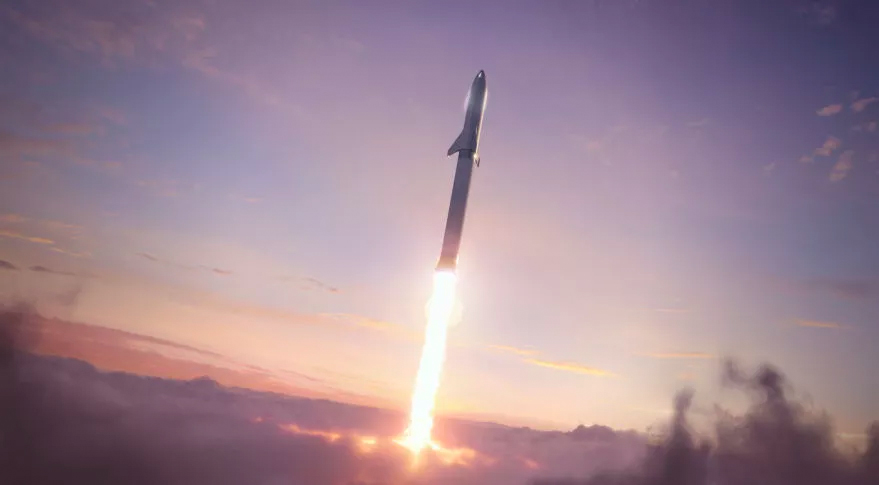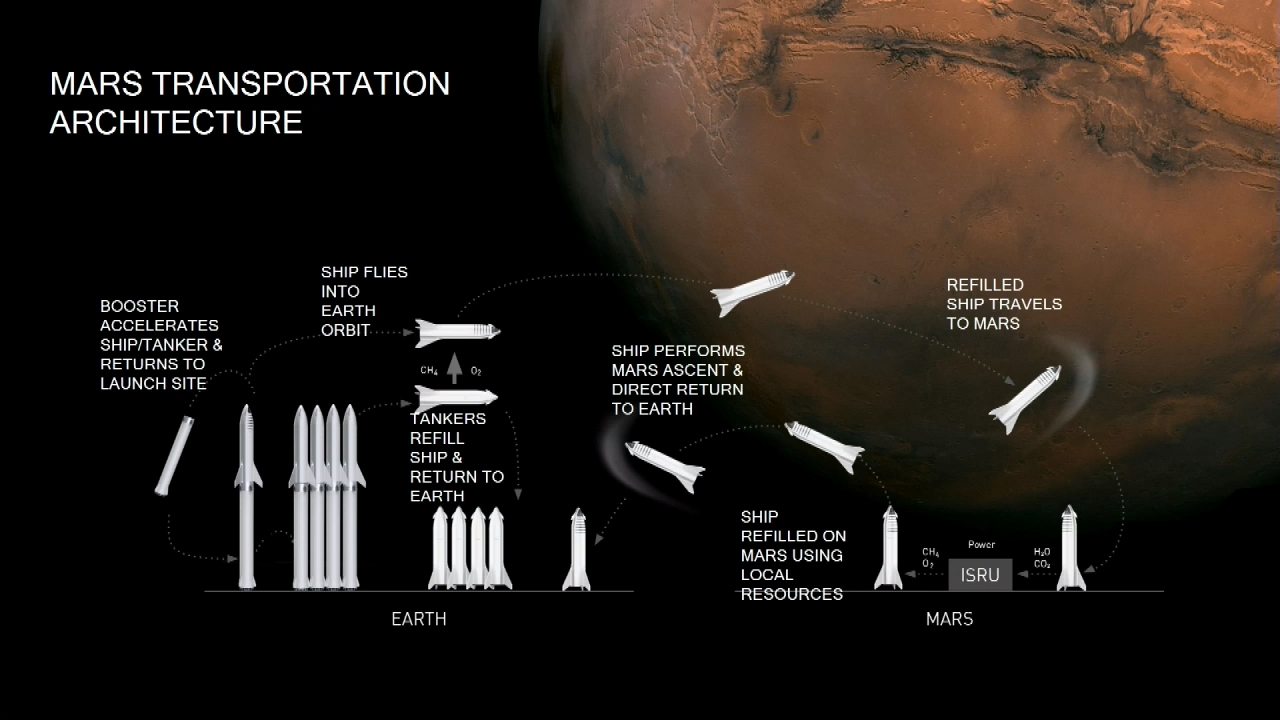Elon Musk says SpaceX's 1st Starship trip to Mars could fly in 4 years

SpaceX is almost ready to start building a permanent human settlement on Mars with its massive Starship rocket.
The private spaceflight company is on track to launch its first uncrewed mission to Mars in as little as four years from now, SpaceX's founder and CEO Elon Musk said Friday (Oct. 16) at the International Mars Society Convention.
"I think we have a fighting chance of making that second Mars transfer window," Musk said in a discussion with Mars Society founder Robert Zubrin. You can watch a replay of the talk here.
That window Musk referred to is a launch opportunity that arises every 26 months for mission to Mars. NASA, China and the United Arab Emirates all launched missions to mars in July of this year. The next window opens in 2022 with Musk referring to the 2024 Mars launch opportunity.
The mission will launch to the Red Planet on a SpaceX Starship vehicle, a reusable rocket-and-spacecraft combo that is currently under development at the company's South Texas facility. SpaceX is also planning to use Starship for missions to the moon starting in 2022, as well as point-to-point trips around the Earth.
Related: Starship and Super Heavy: SpaceX's Mars-colonizing vehicles in images
Musk has long said that humans need to establish a permanent and self-sustaining presence on Mars to ensure "the continuance of consciousness as we know it" — just in case planet Earth is left uninhabitable by a something like a nuclear war or an asteroid strike.
Get the world’s most fascinating discoveries delivered straight to your inbox.
But SpaceX doesn't have any plans to actually build a Mars base. As a transportation company, its only goal is to ferry cargo (and humans) to and from the Red Planet, facilitating the development of someone else's Mars base.
"SpaceX is taking on the biggest single challenge, which is the transportation system. There's all sorts of other systems that are going to be needed," Mars Society founder Robert Zubrin said during the convention.
"My personal hope is that we're gonna see Starship in the stratosphere before this year's out, and if Elon is right, reach orbit next year or the year after," Zubrin added. "This will change people's minds as to what is possible. And then, you know, we'll have NASA seeking to fund the remaining pieces of the puzzle or entrepreneurs stepping forward to develop remaining pieces of the puzzle."
If Musk's projections are correct — he is known for offering overly ambitious timelines — SpaceX's first Mars mission would launch in the same year that NASA astronauts return to the moon under the Artemis program. SpaceX is also planning to fly space tourists on a Starship mission around the moon in 2023. NASA has also picked SpaceX as one of three commercial teams to develop moon landers for the Artemis program.
Musk said Friday that if it weren't for the orbital mechanics that call for Mars launches every 26 months, SpaceX "would maybe have a shot of sending or trying send something to Mars in three years," Musk said, adding that Earth and Mars won't be in the best position. "But the window is four years away, because of them being in different parts of the solar system."
Musk unveiled plans for SpaceX's Starship plans in 2016. The project aims to launch a 165-foot (50 meters) spacecraft atop a massive booster for deep-space missions to the moon, Mars and elsewhere. Both the Starship and its Super Heavy booster will be reusable.
This year, SpaceX launched two test flights of Starship prototypes, called SN5 and SN6, from its Boca Chica test site in Texas. Those flights reached an altitude of 500 feet (150 meters).
SpaceX is currently preparing another Starship prototype, called SN8, for a 12-mile-high (20 kilometers) test flight in the near future.
Email Hanneke Weitering at hweitering@space.com or follow her on Twitter @hannekescience. Follow us on Twitter @Spacedotcom and on Facebook.

Hanneke Weitering is an editor at Liv Science's sister site Space.com with 10 years of experience in science journalism. She has previously written for Scholastic Classroom Magazines, MedPage Today and The Joint Institute for Computational Sciences at Oak Ridge National Laboratory. After studying physics at the University of Tennessee in her hometown of Knoxville, she earned her graduate degree in Science, Health and Environmental Reporting (SHERP) from New York University. Hanneke joined the Space.com team in 2016 as a staff writer and producer, covering topics including spaceflight and astronomy.





